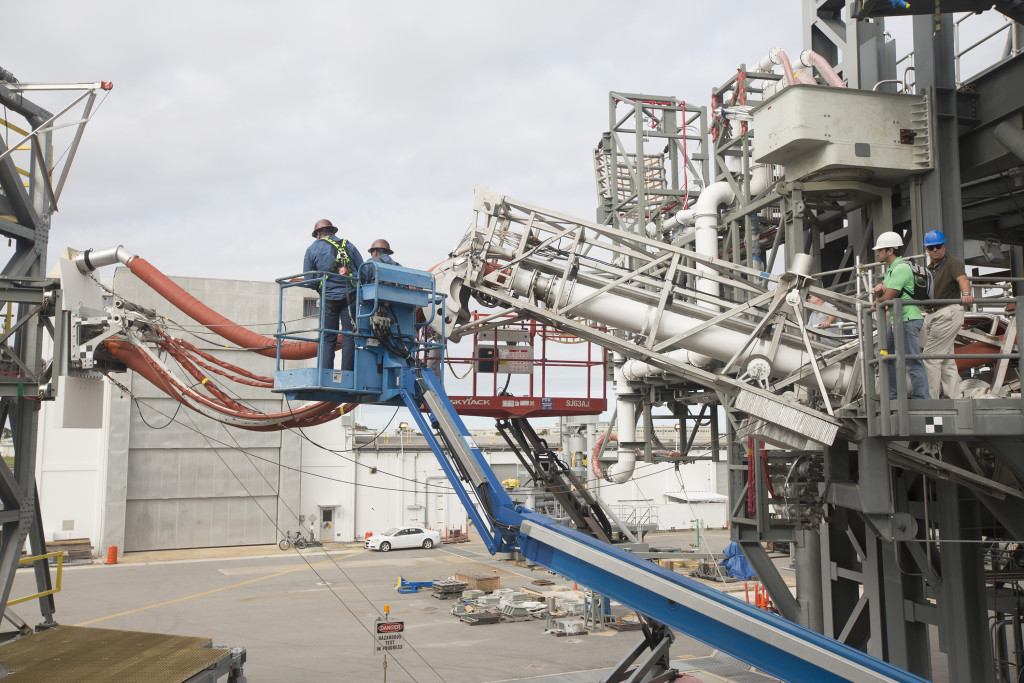
In support of NASA’s journey to Mars, testing began Nov. 30 on one of the umbilicals that will connect from the mobile launcher tower to the Orion service module at the Launch Equipment Test Facility at NASA’s Kennedy Space Center in Florida. The mobile launcher will carry the Space Launch System rocket and Orion spacecraft atop a crawler-transporter to the launch pad for Exploration Mission-1 (EM-1), scheduled to launch in 2018.
The mobile launcher will be equipped with a number of lines, called umbilicals that connect to the rocket and Orion spacecraft to provide power, communications, coolant and fuel. In preparation for the rocket’s first launch on EM-1, engineers are conducting a series of tests on the Orion Service Module Umbilical System (OSMU), including a simulated rocket launch.
During the first in the series of tests, the OSMU was attached to a Vehicle Motion Simulator that can simulate all expected launch vehicle motions from rollout through about the first half-second of launch, when the umbilical is disconnected.
For another test, the OSMU will be attached to a replicated section of the Orion service module on the simulator, and will experience the maximum velocity, up to 70 inches per second, during a launch simulation.
The center’s Engineering Directorate is providing support to the Ground Systems Development and Operations Program for testing of the OSMU. This umbilical will be located high on the mobile launcher tower and, prior to launch, will transfer liquid coolant for the electronics and air for the Environmental Control System to the Orion service module that houses these critical systems to support the spacecraft.
Engineers also will check the OSMU umbilical interfaces, hoses, and quick-disconnect plates for functionality. The tests will verify that the 15-foot-long umbilical will be ready for installation on the mobile launcher early next year and ensure that the umbilical will be ready to support launch of the SLS rocket and Orion spacecraft.
